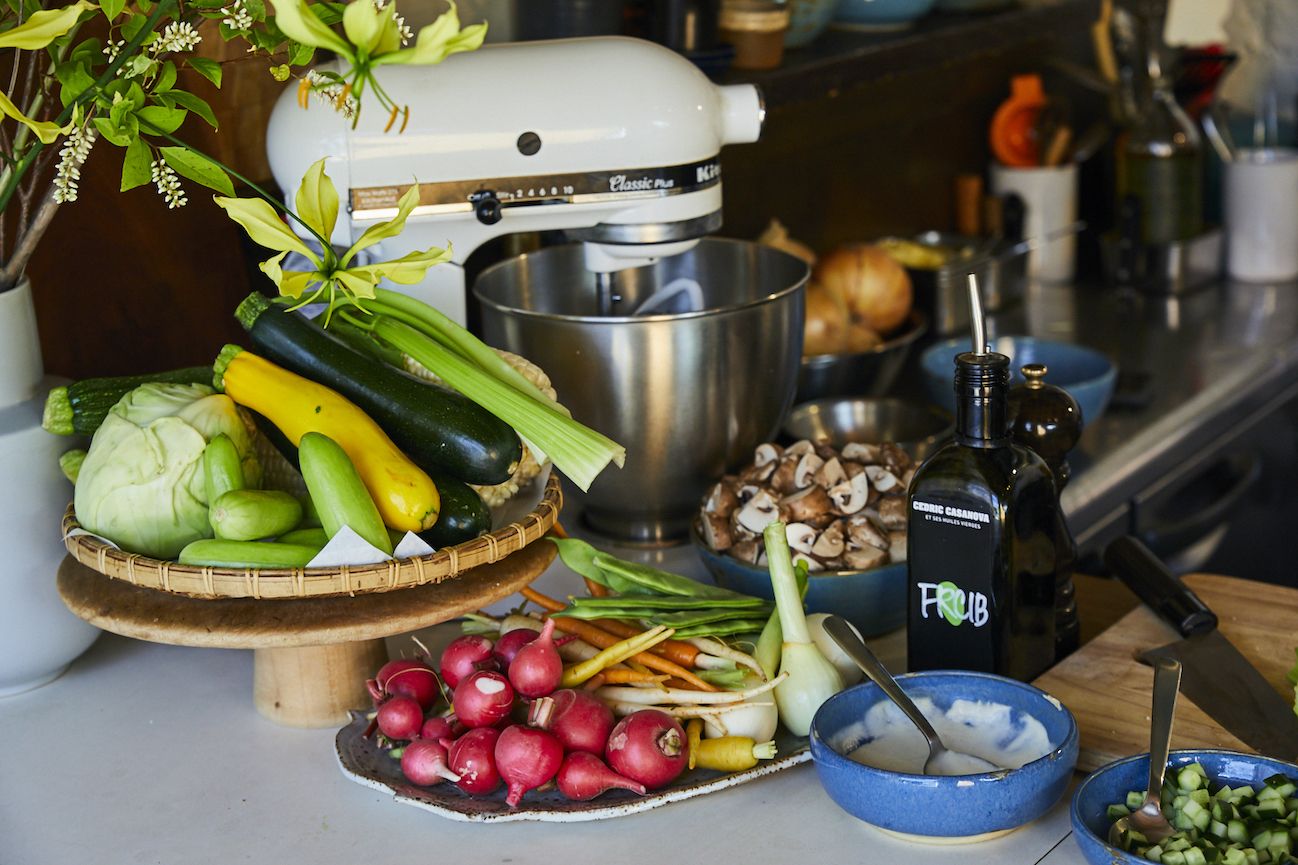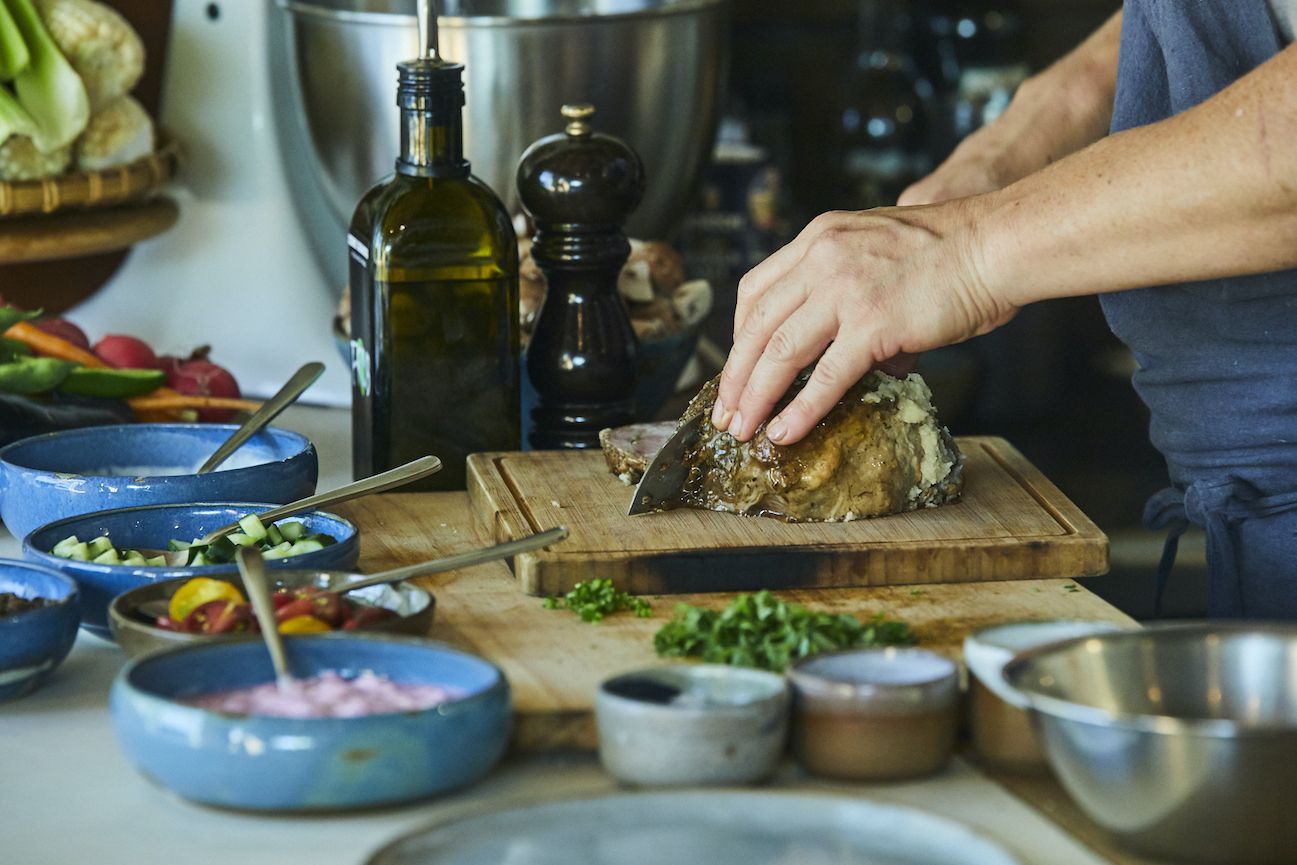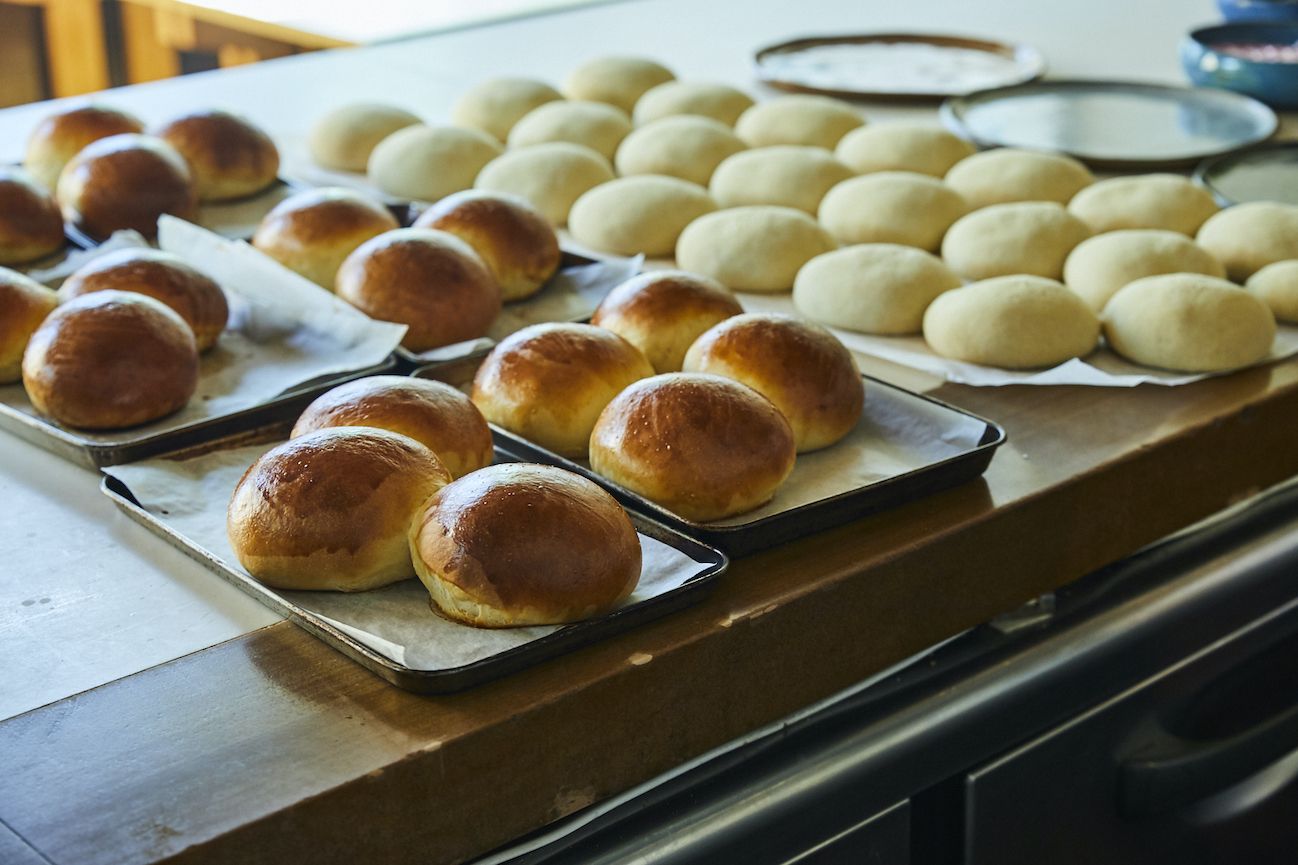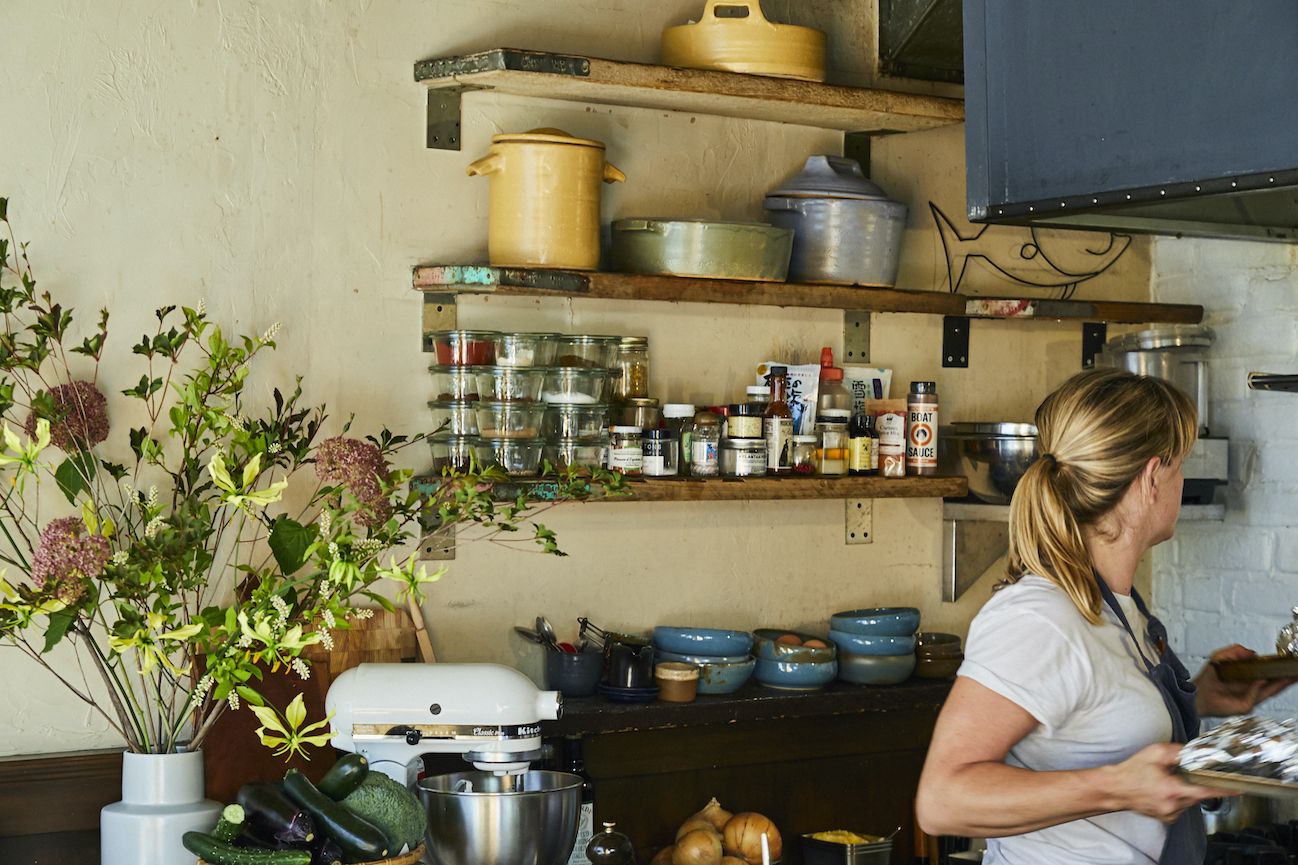
Ingredients grown in Japan and created by each abundant season, with a handful of love mixed in
Meguro City, Tokyo. In a quiet residential area on a back street one block in from the main road, the restaurant of around 15 seats surrounding a compact open kitchen is filled with informal chatting and delicious aromas. Running the small, but popular, restaurant “Locale” is a young woman from California. Her name is Katy Cole, with a sunny smile said by some to be the restaurant’s source of energy. Born in Los Angeles and brought up in San Francisco, various encounters with fate lay behind her opening a restaurant in a back street of Tokyo.

Counter seats facing the open kitchen are special too, but the best seats are also next to the big window with a pleasant light shining in.
Katy first visited Japan in 2015. At this time she was working at a restaurant in San Francisco, and during her 10-day sightseeing visit, she toured around a list of good restaurants researched by herself. One of them was a small restaurant called “Beard” that hand-picked its raw ingredients, and was the subject of talk among gourmet aficionados at the time.
“I instinctively thought, if I ever run my own shop, I’d like a small restaurant in this kind of place with this kind of atmosphere. I strongly shared the feelings about selecting ingredients grown in Japan, and I soon became friends with the chef. Half a year later, I received news from the chef that they were moving, and the shop in Meguro was empty. I decided immediately that if that was the case, I would take it on. With a mixture of excitement and fear of owning her own restaurant, let alone a plot in a foreign country, constantly at the center of her heart lay a passion for ingredients grown in Japan. At her Japanese restaurant, she would put this into practice alongside “Farm to Table”, linking place of production with dining table, which had been the norm at the San Francisco restaurant.
Vegetables are delivered daily, straight from farms, to coincide with open times. Arrived today are beetroot and radishes from Ome in Tokyo, lemons, delicious to the rind, from Hiroshima and a box crammed full of kale, carrots, zucchini, fennel, broccoli, green beans, etc. from a farm in Kochi. They are all fresh vegetables, grown in selected good soil without chemicals and in open fields. Katy puts them on display, lovingly one by one, in her open kitchen.
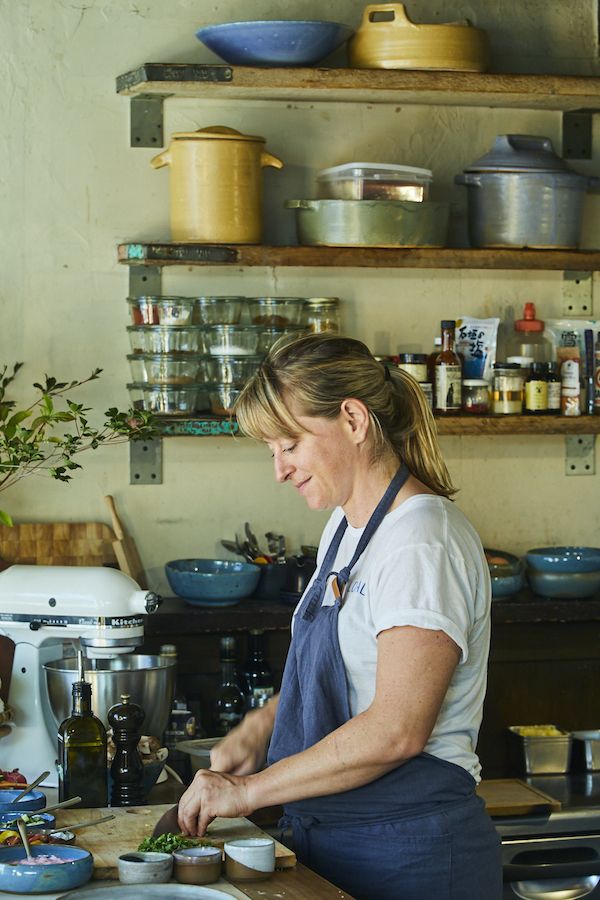
Watching Katy’s skill as she carefully and lovingly handles ingredients never gets tiresome.
“I’ve gone through contacts with many people, and confined the raw ingredients used at Locale to only food that is delivered straight from a number of producers. However, I’ve left it to the producers to select the vegetables, meat and fish that can be harvested in the season. Behind my decision was the abundance of each season that I sensed from living in Japan. I found there are beautiful seasonal changes, when there are clear, corresponding seasons too in agricultural produce. I thought the culture of enjoying the seasons even through food is a very Japanese thing. Noticeably different than the Western culture of always being able to get hold of the same vegetables, I feel there is a seasonal flavor distilled in the vegetables of Japan.”
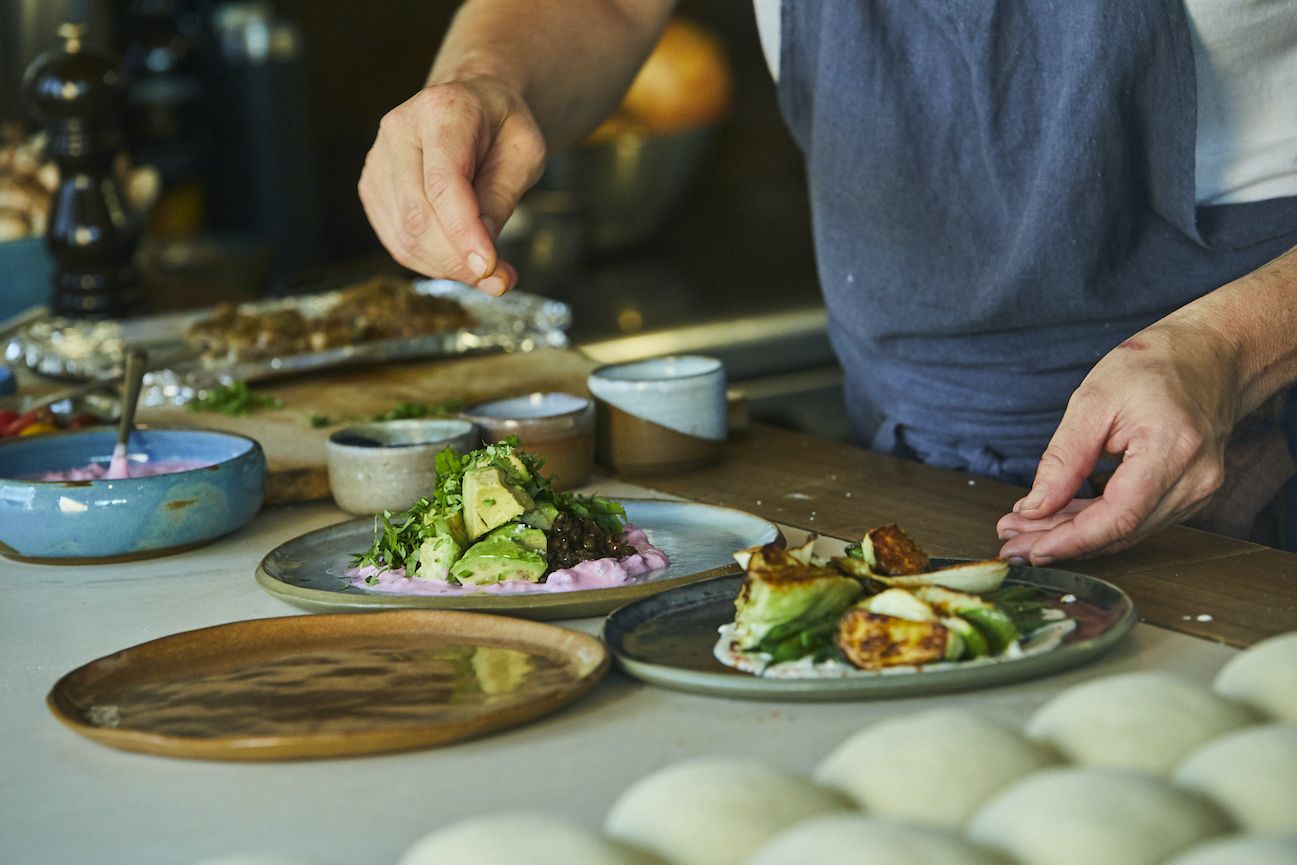
Her cooking methods are very simple. In order to bring out the flavor of the produce themselves, she serves them up swiftly using her specialty sauce, salt, olive oil, etc.
“I am astonished by the many varieties of vegetable in Japan. For instance, even among eggplants you find long eggplant, giant eggplant, eggplant for eating raw, small eggplant and so on, and it’s fun to see how many different types there are. And all vegetables taste sweet! I heard that many farmers in Japan harvest their produce just at the moment they get their best flavor. The sweetness of vegetables in Japan, and the depth of their flavor, is just really amazing”
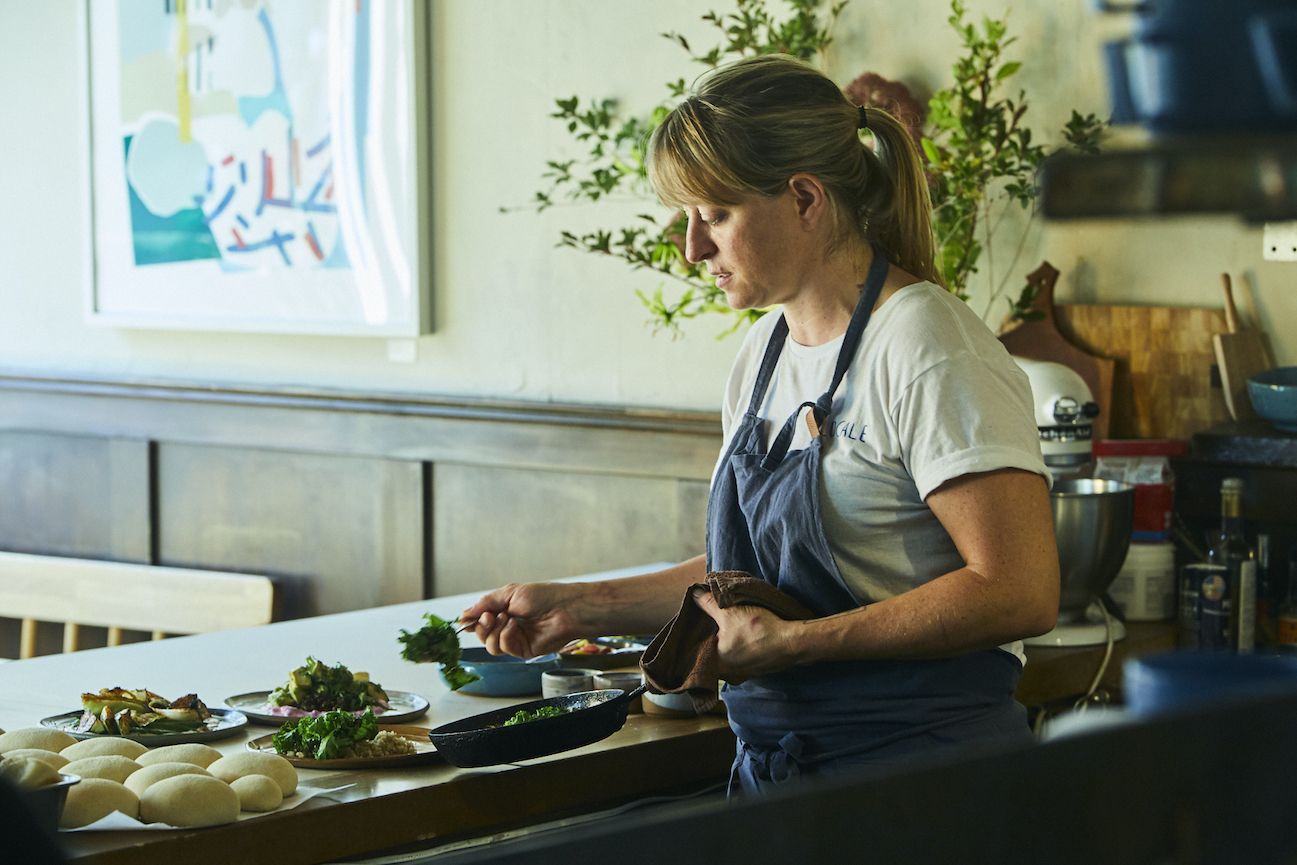
Katy also enjoys having a chat with the customers sitting in front of her while cooking.
Katy takes time to know her producers well, not just of vegetables, but also meat and fish. She is delighted because a few days previous, she was introduced to delicious sakura shrimp by a Nepalese chef working in Tokyo, and was able to meet the fisherman in Shizuoka. She puts utmost importance on producer-ties that spread via food: the livestock farmer in Kagoshima supplying pork learnt charcuterie in Germany which involves processing without removing any parts, thus using sustainable production methods that she totally agrees with. “I think of things like tender pork and tasty Japanese beef as a gift from the fine-eyed producers of Japan and their nurture of new talent. Also, the regular abundant catch of seafood is due to the unique way Japan is surrounded by sea.
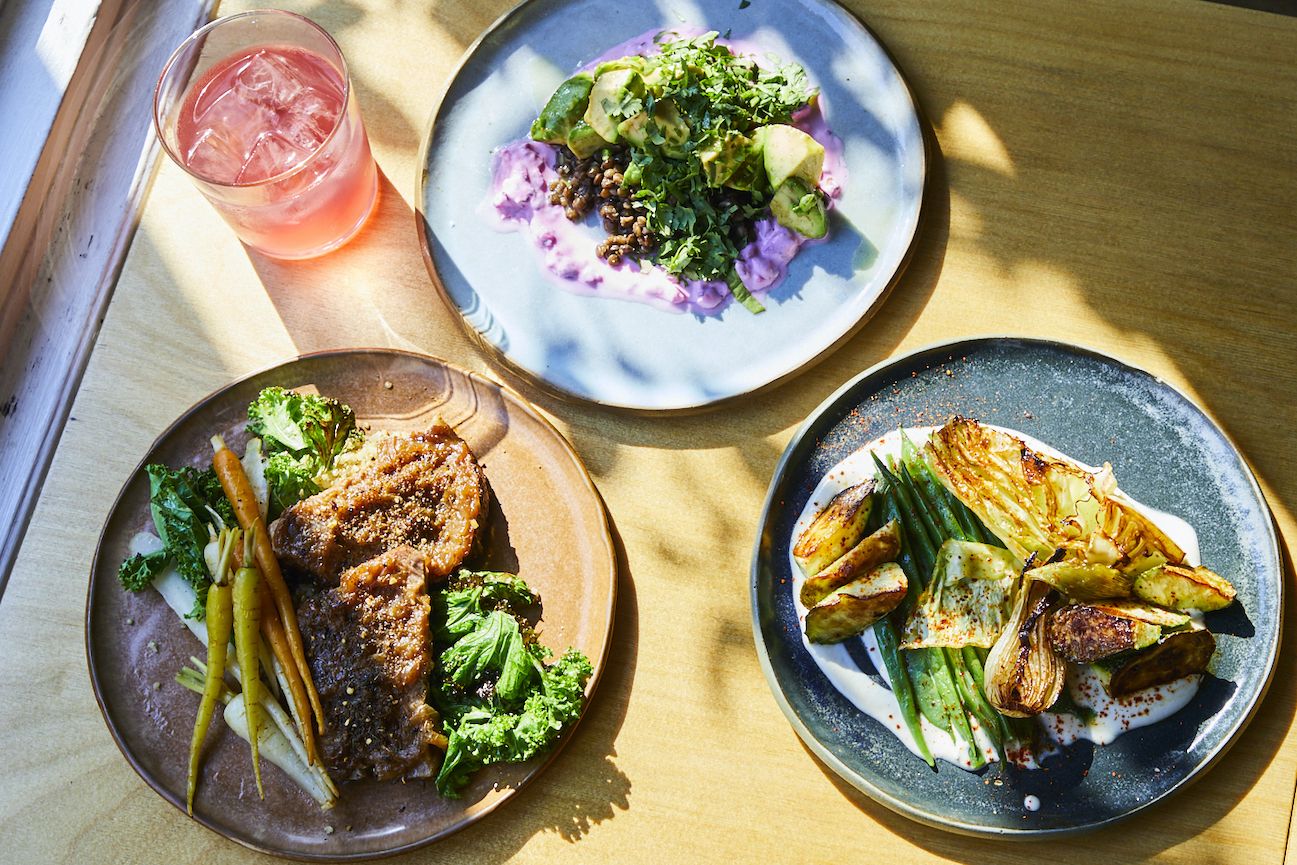
Clockwise from top, “Avocado, shibazuke (*), yogurt, french lentil;” “Creamy cashew, spring onion, Moroccan bean, broccoli;” “Fukudome pork, quinoa, baby carrot, kale, caramelized onion.” (*) Shibazuke is a fermented food consisting of eggplant, cucumber, ginger, etc. pickled in red perilla and salt.
Until she opens the box, she has no idea what is inside. The produce that she encounters with glee are an invitation to a challenge toward opening doors on new cuisine. Thinking up the day’s menu there and then has now become part of her daily life. Even produce unique to Japan, once in her hands, transform into dishes never seen before.
“I’m forever looking for nice matches between produce !” she says, her cuisine excelling in combinations of flavors as well as combinations of colors. While she has no regular menu, the one thing she maintains is the colorful appetizer using “shibazuke.” The combination of the acidity of “shibazuke”, colored by beautiful red perilla, and thick Japanese yogurt, is a special sauce that draws out the sweetness of the vegetables even further. “I realized for myself that lentils, yogurt, avocado and shibazuke go incredibly well together. Shibazuke and yogurt are both fermented foods with high quality taste, which I see as expressions of the careful making of things by Japanese people.”
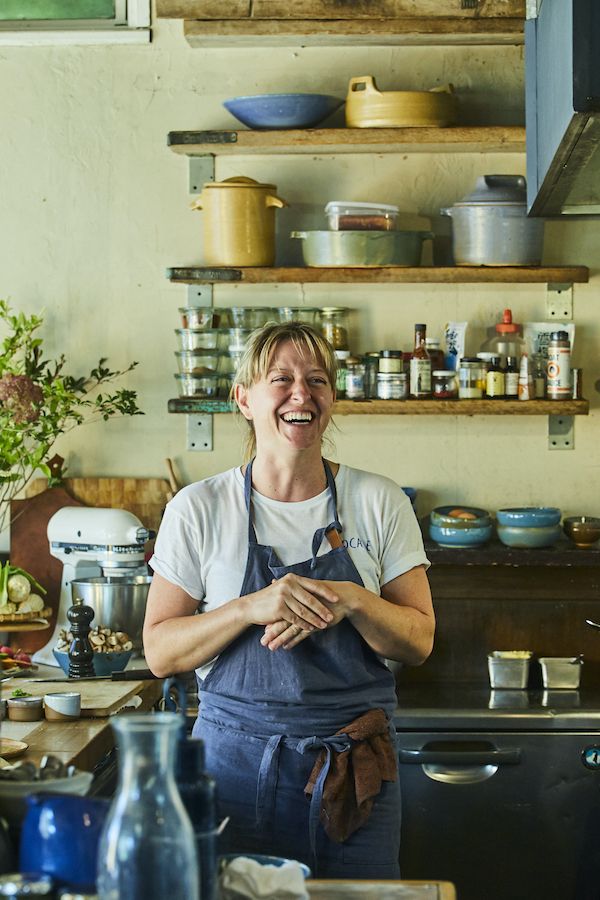
The space is filled with the positive energy that is her character.
Not just produce, but the weather, temperature, as well as her own naturally bubbling emotions, are all condensed and reflected in that day’s cuisine. A creative one-dish, cooked with the desire to make the day even just a little bit better, also carries the role of life linking to the safe produce grown with sincerity by producers. “I don’t want to do things like throw away the carrot tops,” she murmurs, suggesting her strong passion for cooking.
Text: Miki Suka Photography: Taro Terasawa
Katy Cole
From San Francisco, with experience working at the popular restaurant “State Bird Provision.” Lured by the deliciousness and charm of the produce on a visit to Japan, she decided to move here. She opened the restaurant “Locale” in Meguro, Tokyo, in 2017. She buys in produce directly from producers all over Japan, and decides her menu around the “producer-selected” produce delivered that day.

